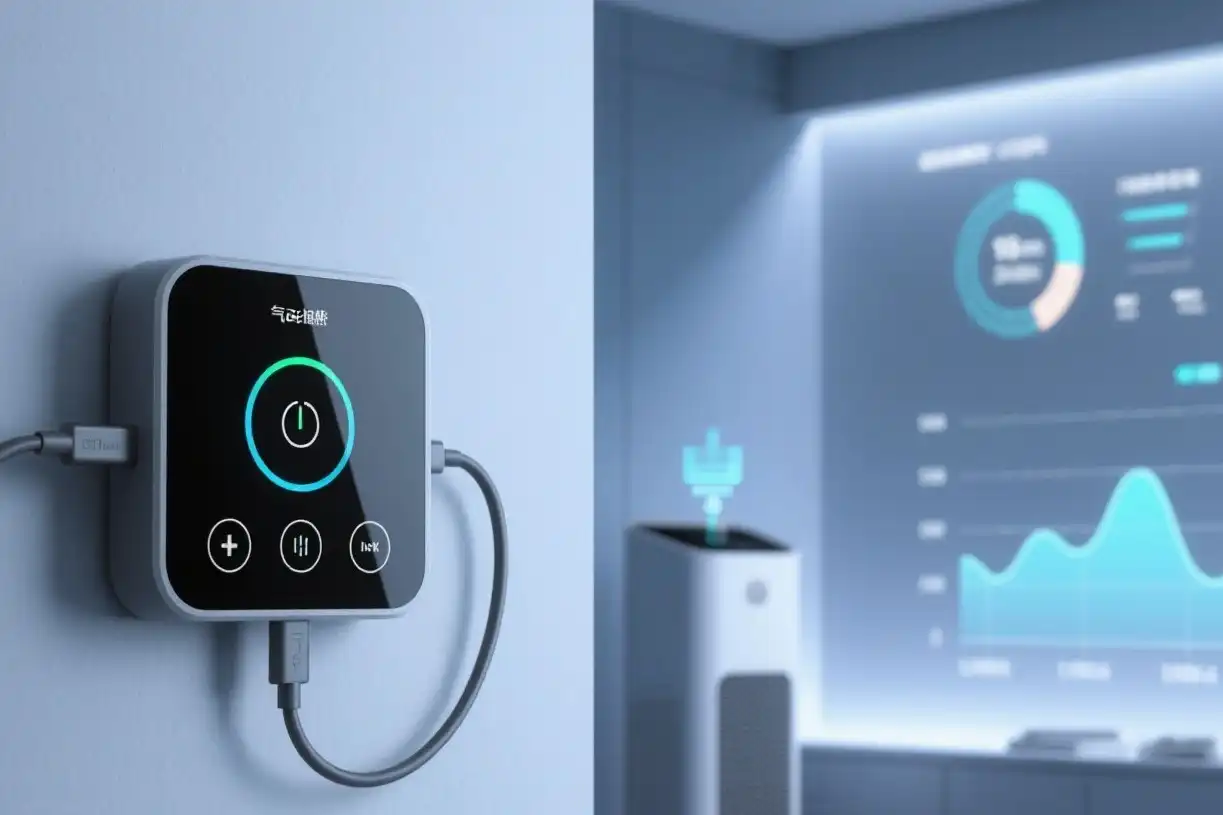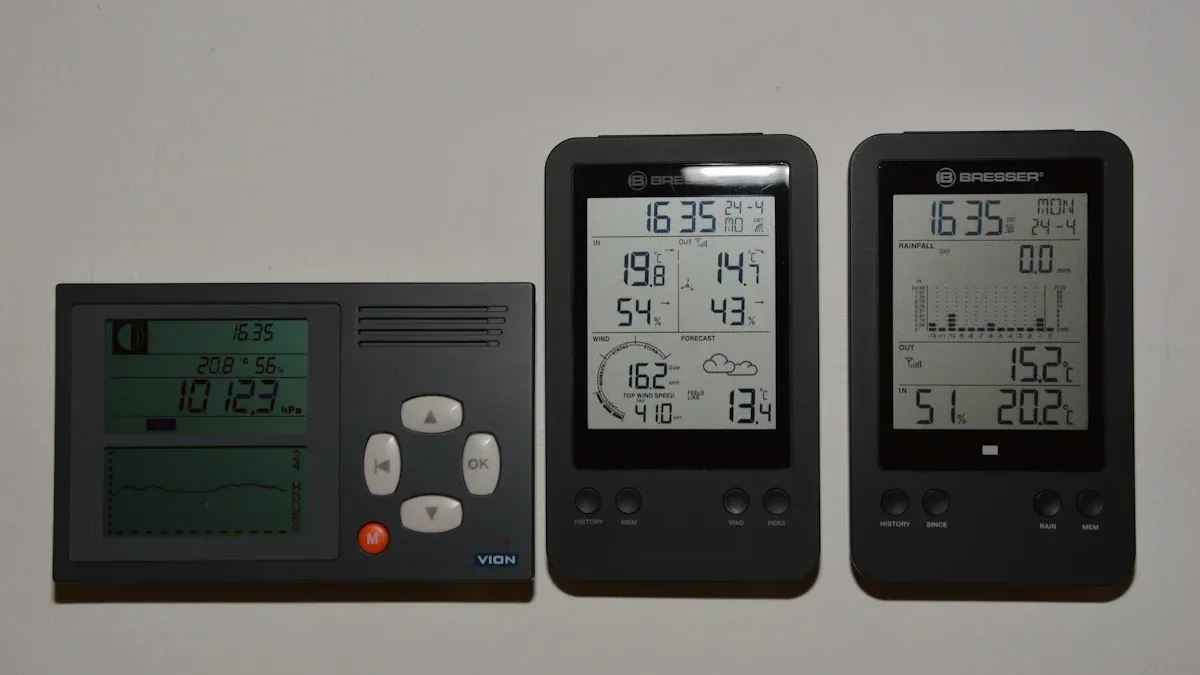
Air Quality Index Sensor technology helps your air purifier work better. It makes the purifier smarter and faster to respond. This gives you cleaner air and makes life easier. It also helps keep you healthy every day. Studies show kids with asthma do better with these purifiers. They go to the emergency room less often and breathe more easily.
- Unplanned doctor visits went down by 72% for these families.
- Indoor sensors showed real changes in air quality.
More people now see how useful smart sensors are. The market for these air purifiers is growing around the world. Imagine getting instant updates about the air you breathe. This could really change how your home feels.
Key Takeaways
- Air Quality Index Sensors help air purifiers find pollution. They change their speed by themselves to keep air clean. This also helps save energy.
- These sensors check for tiny dust, bad gases, and carbon dioxide. They give quick updates about the air in your home.
- Using a purifier with these sensors can help your health. It can lower allergy problems. It also saves money by working only when needed.
- Clean the sensor often and put the purifier in busy rooms. This keeps the sensor working well and your air fresh.
- Smart air purifiers with sensors can use apps and voice helpers. This makes it easy to watch and change your air anytime.
Air Quality Index Sensor Basics

What the Sensor Measures
When you have an Air Quality Index Sensor at home, you can see what is in your air. These sensors watch for different pollutants that can hurt your health. Here are some main things they check:
- Particulate Matter (PM2.5 and PM10): These are tiny bits from dust, smoke, pollen, and car exhaust. PM2.5 is very small and can go deep into your lungs.
- Volatile Organic Compounds (VOCs): These gases come from paint, cleaning sprays, and new furniture. VOCs can give you headaches or make asthma worse.
- Carbon Dioxide (CO2): Too much CO2 can make you feel sleepy or give you a headache. It also shows if your room needs more fresh air.
- Carbon Monoxide (CO): Some sensors look for this dangerous gas, but you should still use a special CO detector to stay safe.
Tip: To see what your air purifier is cleaning, look at the sensor’s screen or app. Many models show live data for each pollutant.
How It Works in Purifiers
The Air Quality Index Sensor uses special tools to find and measure pollution. For things like dust and smoke, the sensor shines a light and counts the particles that pass by. This is called optical particle counting. For gases, the sensor uses materials that change their electrical resistance when they touch certain chemicals. Some sensors use UV light or a tiny flame to find harmful gases.
Your air purifier checks this data every few seconds. If the sensor finds more pollution, the purifier makes the fan go faster. When the air gets cleaner, the purifier slows down to save power. You do not need to change any settings. The Air Quality Index Sensor helps your purifier work smarter and keeps your air clean all day.
Sensor Benefits
Real-Time Monitoring
Real-time monitoring lets you check your air anytime. The Air Quality Index Sensor gives you quick updates about your home’s air. You can spot problems fast. If someone cooks or pollen goes up, you will see it on the display or app.
- Real-time monitoring helps you find pollution that can make people miss school or work.
- You can see how dust and humidity change how you feel.
- Tracking air quality helps you fix problems and miss fewer days from being sick.
- Real-time data helps you act fast, so you feel better and get more done.
A study in Denmark showed that cleaning indoor air made people work up to 9% better, even if they did not notice bad air. Real-time monitoring also helps you use less energy. You know when to open a window or turn on your purifier, so you do not waste power. Many new systems show air quality in each room, so you know where to clean or let in fresh air.
Note: Real-time monitoring helps everyone at home stay healthy and comfortable.
Automatic Adjustment
Automatic adjustment means your purifier changes its settings by itself. When the Air Quality Index Sensor finds more dust, smoke, or chemicals, the fan goes faster. When the air is cleaner, the fan slows down to save energy. You do not need to guess or change anything.
- Sensors like PM2.5 and VOC detectors tell the purifier when to work harder.
- Some purifiers use smart tech to guess when pollution will go up, like when cooking or cleaning.
- Brands with good sensors, like Sensirion or Plantower, work better.
| Feature | With Automatic Adjustment | Without Automatic Adjustment |
|---|---|---|
| Air turnover rate (units/h) | 4.49 | 2.61 |
| Energy efficiency (kW/m³) | 0.001388 | 0.001412 |
| Effective air cleaning (m³/h) | 1750 | 1510 |
This table shows purifiers with automatic adjustment clean more air and use less energy. The system works smarter because it uses real-time data from the Air Quality Index Sensor.
Energy and Health Impact
When your purifier uses sensors to change speed, you save energy and stay healthy. The Air Quality Index Sensor makes the purifier run only when needed. This means lower bills and less noise at home.
Smart purifiers can save up to 44% more energy than regular ones. They keep air clean without running all the time. You still get the same or better air quality. Some smart modes, like eco or sleep mode, use the sensor to slow the fan when pollution is low.
The Air Quality Index Sensor also helps you meet EPA indoor air rules. It checks for dust, smoke, and gases, then shows a simple color scale. You can see if your air is safe or if you need to do something. This helps you follow health rules and keep your family safe.
Tip: Using a purifier with a sensor helps you save energy and protect your health. You get alerts when air quality drops, so you can act fast.
Practical Considerations
Sensor Accuracy
Not every sensor works the same way. Some air purifiers use old or special sensors. These can give less reliable results. For example, the Amazon Smart Air Quality Monitor uses a sensor with little information about it. This makes it hard to know if the numbers are right. Some sensors, like for carbon monoxide, cannot take the place of a real CO alarm.
Indoor air changes a lot during the day. Cooking, cleaning, or opening a window can change the sensor’s numbers. PM sensors usually give better results than VOC sensors. VOC sensors can be wrong if it is too hot or wet inside. PM sensors have more test data, but VOC sensors do not.
| Sensor Type | What It Measures | Accuracy Challenges |
|---|---|---|
| PM Sensors | Dust, pollen, smoke | Usually reliable, but affected by indoor activity |
| VOC Sensors | Gases from products, cleaners | More sensitive to temperature and humidity |
Note: No sensor is perfect. Use the Air Quality Index Sensor as a guide, not the only answer.
Smart Home Integration
Many smart air purifiers work with Alexa, Google Assistant, and Apple HomeKit. You can check your air or control your purifier with your phone or voice. Most brands have their own apps for Android and iOS. Some models have extra sensors for temperature and humidity. This helps you know more about your home’s air. If the air feels stuffy and CO2 is high, you know to open a window.
Tip: Pick a purifier that works with your smart home system and has extra sensors for more information.
Maintenance Needs
You need to take care of your sensor to keep it working well. Clean the outside of the sensor probe every few weeks. This removes dust. Some purifiers have ionizer wires or plates that also need cleaning. Do not forget to check the filter, but sensor care is just as important. Before you buy, see how easy it is to clean the sensor and how often you need to do it. Some sensors use cartridges you can replace to keep them working right.
- Clean sensor probes often.
- Wipe ionizer wires and plates if your purifier has them.
- Follow the cleaning steps in your user manual.
Keeping your Air Quality Index Sensor clean helps it work well and keeps your air purifier running smoothly.
Real-World Effectiveness

User Experiences
When you use an air purifier with an Air Quality Index Sensor, you notice changes in your home’s air. Many people say they feel better and breathe easier. You might see fewer dust particles on your furniture. Some users report that their allergies bother them less. Parents often say their children cough less at night.
You can check your purifier’s app or screen to see how the air changes during the day. If you cook or open a window, you may see the numbers go up. The sensor helps you know when to run the purifier. You do not have to guess. This makes you feel more in control of your home’s air.
Tip: Keep your purifier in the rooms where you spend the most time. Bedrooms and living rooms are good choices.
Case Examples
Studies show that sensor-equipped purifiers make a real difference in homes. Here is what researchers found:
- Portable air purifiers with sensors lowered PM2.5 (tiny dust and smoke) by about 45% on average.
- In a study of 57 homes across three European cities, bedrooms saw PM2.5 drop between 45% and 69%.
- These purifiers used sensors to watch the air and adjust how they worked.
- Many people turned on their purifiers for comfort, not always for air quality. This means you can get even better results if you use the sensor data.
- Sensor data helps you know when to run your purifier for the best air.
| Location | PM2.5 Reduction (%) |
|---|---|
| Average Home | 45 |
| Bedrooms | 45–69 |
You can see that using a sensor-equipped purifier gives you cleaner air. The sensor lets you track changes and helps the purifier work smarter. If you pay attention to the sensor’s alerts, you can keep your air even cleaner.
Picking an air purifier with an Air Quality Index Sensor lets you see air changes right away. The purifier can change its speed by itself to save energy. You can watch for pollution and use your phone to control the purifier from anywhere. This helps you have cleaner air at home or work. Try to find purifiers that check PM2.5 well, are simple to set up, and work with smart home systems. Breathing cleaner air helps everyone feel better and lowers health problems.
Focusing on indoor air quality keeps your family safe and helps them stay healthy for a long time.
FAQ
How often should you clean the air quality sensor?
You should clean the sensor every few weeks. Dust can build up and affect readings. Check your user manual for steps. A clean sensor helps your purifier work better and keeps your air cleaner.
Can you trust the numbers on the sensor display?
You can trust most readings for dust and smoke. VOC readings may change with temperature or humidity. Use the sensor as a guide. For dangerous gases like carbon monoxide, always use a dedicated detector.
Do air quality sensors work in every room?
Sensors work best in rooms where you spend the most time. Bedrooms and living rooms are good choices. Avoid placing purifiers near windows or vents. This helps the sensor give you more accurate results.
Will a smart air purifier save you money?
Yes, a smart purifier can save you money. It runs only when needed. This lowers your energy bill. You also replace filters less often. Over time, you spend less and breathe cleaner air.
What should you do if the sensor shows poor air quality?
Open a window if possible. Turn on your purifier to a higher setting. Check for sources of pollution like candles or cooking. Clean the sensor if readings stay high. If you see a warning for dangerous gases, leave the room and get help.
See also
Do Air Purifiers Make a Difference for Dust Allergies
Simple Methods for Monitoring Air Quality with AQI Sensors
Things to Consider Before Buying an AQI Sensor Air Purifier with Display
The benefits of air purifiers for illness prevention and health improvement
